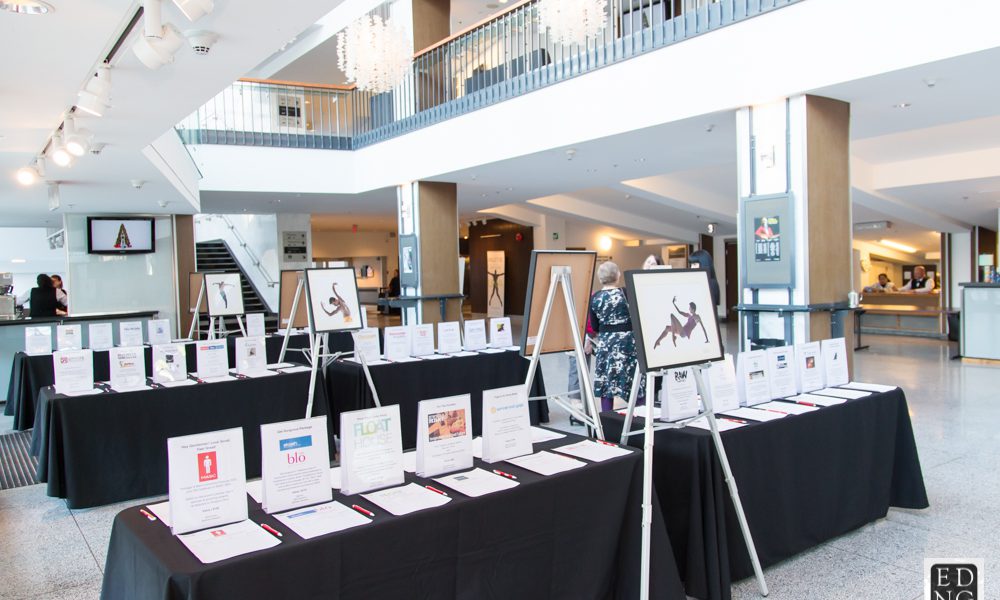Most benefit auctions consist of several Silent Auctions and one Live Auction. Silent Auction setup is vital to the success of any auction, because this is the part of the evening that people experience first.
For planning purposes, here are some guidelines to follow when doing advance planning for your Silent Auction:
1. Close your Silent Auction in sections, not all items at once
Closing the Silent Auction in sections allows for compression of the bid activity due to supply and demand.
As you take items away (close a section) you make the remaining items more valuable, because there are more bidders for fewer items.
2. Close all Silent Auction sections prior to the Live Auction
Never keep a Silent Auction open until after the Live Auction. To do so will make it impossible to have a smooth checkout process.
3. Budget two linear feet of table frontage per Silent Auction item
Do not ask the facility how many tables they will give you.
Plan for how many linear feet you require for the anticipated number of items you will sell, and then tell them how many tables you will need.
If necessary, rent more tables and be sure the facility can handle the space required for the additional tables.
4. Place drink bars at the most remote areas of the Silent Auction
Guests will need to walk past your item displays to get their drinks.
If you place the bars in a hallway or outside the Silent Auction area, your guests have little incentive to walk through your Silent Auction.
Be careful that any lines forming at the bars do not block your bidding tables!
5. Avoid the buffet island of food
Buffets draw bidders to the food and away from the bidding tables.
Instead, pass appetizers if possible, or at least spread the food around the Silent Auction area, with cheese and crackers at one station (between silent display tables) and vegetables on the other end of the area.
By placing the various food items around your Silent Auction room, you create a flow through the bidding area and eliminate congregation at the food tables.
6. Test the lighting at the same time of day
Visit the event location at the same time of day as you are planning your event, so you can see the existing ambient lighting. Doing a site visit at noon will not tell you what the lighting will be like at 7:00 P.M.
Plan for auxiliary lighting if needed. Candlelight dinners = good; candlelight Silent Auctions = bad!
7. Keep a one-to-one ratio of Silent Auction items to buying units
If you plan on having 200 Buying Units (approx. 400 people), then the ideal number of Silent Auction items would be 200.
If you have fewer auction items than that, you have lost opportunity, but the yield on each item should go up. If you go much over that ratio (more than one item per buying unit), you start to spread the same bid dollars over more items.
The one-to-one relationship is optimal. To get there, plan to assemble bundles of synergistic items if you have many more items than buying units.
8. Budget at least eight feet of available walking space between tables
Carefully check how much room is available for item display and guest access at your venue.
Your silent tables must have at least eight feet of available walking space between them, if you set up islands or columns of tables.
If you allow less than eight feet, your guests will not walk between the tables, and this will cost you bids.
9. Use an easy-to-follow catalog numbering system
Catalog numbering systems make it easy for guests to find items, assuming you provide a catalog to follow.
If, for example, you have three Silent Auction sections (closings), then you would want a system that places items in Section A, B, and C to correspond first, second, and third closings.
Therefore, the numbering of the items for the first closing should be Section A, numbers 101, 102, 103, and so on. The second closing would be Section B with a numbering system of 201, 202, 203, and so on.
Do not start your numbering system at number 1 because you will end up with single-, two-, and possibly three-digit numbers, which makes cross-checking correctly entered bids more difficult.
10. Use props to tastefully display items
If possible, build ‘‘skylines’’ with your item displays.
To do this, cover cardboard boxes or crates with cloth at varying degrees of height. Bring smaller items up closer to the eyes of your bidders by placing them on taller boxes.
When displaying jewelry, try to use a jewelry display case, which often can be borrowed from the jeweler who donated the item.
11. Be creative when displaying gift certificates
Display gift certificate items with pictures, murals, drawings, magazine clippings, props, anything you can find to make the item more appealing.
Alternatively, leverage the buy-it-now board for your left over gift certificates.
12. Use a bid system with preset bid steps
Don’t count on bidders to do mental math. Preprint the actual bid steps on the form.
13. Never ask for personal information on bid forms
This is a bad idea for several reasons.
People may not want others to know that they are bidding on the IRS tax attorney services or liposuction. Or, Mary may not want to outbid her friend Sally on a child’s gift basket out of respect for their friendship.
Worse yet, consider that many people feel uncomfortable listing their phone number, especially people who are famous or have a high net worth.
Use bid numbers instead and get the contact information upon checkout.
14. Preview the Live Auction items in the Silent Auction area
The Silent Auction sets the stage for the Live Auction, so having an area in the Silent Auction where your guests can preview the Live Auction items that will be up for bid is also a good idea.
When planning your space allocation, therefore, include enough space in a prominent area for the Live items to be displayed, with excellent lighting and easy access.
This will contribute to your Live Auction by giving your bidders an hour or two to think about the items and for couples to discuss their interest.
This post is adapted from The Big Book of Benefit Auctions by Jay R. Fiske and Corinne A Fiske.




